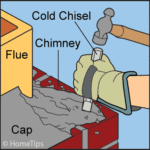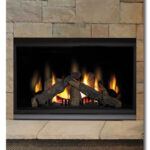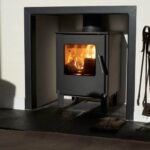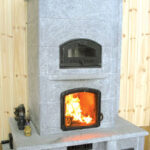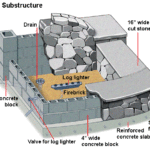Nothing quite matches the warmth and ambiance of flickering flames in a fireplace.
On a cold day, a fire is the perfect focal point for reading a good book or enjoying quiet conversation. But wood-burning masonry fireplaces have fallen under scrutiny in recent years because of concerns about carbon output and pollution caused by particulates in their smoke.
Fortunately, conventional wood-burning masonry fireplaces have evolved to mitigate some of the air pollution problems associated with them. Today a variety of options are available that produce heat with much less pollution.
Masonry Fireplace Chimneys
Combustion appliances and fixtures such as fireplaces, wood stoves, pellet stoves, and furnaces must vent their smoke and other toxic combustion gases through a flue or chimney.
Chimneys are designed to capture and carry smoke and hot gases up and away. To pull smoke and gasses away by natural convection, a chimney is typically tall—from fireplace to a couple of feet above the roof.
Though traditional chimneys vent out the roof, some of today’s high-efficiency fireplaces and other combustion appliances can vent out through a wall.
Conventional chimneys have traditionally been built of brick and mortar, lined with fireproof flue tiles, and capped with mortar to seal the top against weather. But today, manufacturers sell newer, easier-to-install double-wall metal chimneys sold in parts or as prefabricated kits. These are much easier to build andless likely to fall in an earthquake.
Most chimneys handle their important job admirably. However, a damaged or poorly-maintained masonry chimney wastes energy and presents a safety hazard.
With a wood-burning fireplace, while the chimney vents smoke, the burning chamber draws in oxygen to feed the fire.
Fireplace Hearth & Doors
Unless a fireplace has glass doors and a vent that draws combustion air from outdoors, it can extract more warmth from a home than it delivers. Those same convection currents that carry smoke up the chimney can also pull expensively-heated interior air from the room, sending it out through the chimney.
Materials used for a masonry fireplace’s hearth and facade include brick, rock, concrete, marble, granite, and tile. Codes and common sense restrict how close to the opening you can locate combustible materials—such as wood paneling, wood flooring, or wallboard.
The Anatomy of a Masonry Fireplace
Masons build classic masonry fireplaces, using brick, stone, and the like. Building such a fireplace is time consuming and expensive—typically costing $5,000 or more.
Real masonry fireplaces require a heavy-duty concrete foundation to bear and distribute the significant weight of the fireplace and chimney. They’re almost always built where a home is under new construction (a new home or major addition). Traditionally, these fireplaces burn wood but, because of the pollutants they create, many masonry fireplaces are now fitted with gas-burning log sets.
Many fireplaces that appear to be masonry are not actually made entirely from brick, stone, or other masonry materials. Instead, they have a facade of masonry materials but their interiors and chimney flues are high-efficiency appliances manufactured from steel, as discussed below. Bottom line is that this is just a much easier, more affordable way to build a fireplace that is far more efficient than its masonry counterpart.
Construction of a Masonry Fireplace
The drawing here shows the construction of a typical classic masonry fireplace, from top to bottom. The chimney cap keeps objects from falling into the chimney and, with a spark arrester, keeps sparks from escaping.
The chimney flue, made from insulated metal or terracotta, safely carries combustion gases up the chimney.
The smoke dome and wind shelf work together to funnel smoke and gases out the chimney.
The damper, a door made of cast iron or steel, regulates the draft up the chimney.
The firebox contains the fire, sends smoke upward, and maximizes heat radiation into the room.
The ash pit, accessed through a small metal door outside provides a fireproof storage area for ash.
The foundation supports the weight of the fireplace and chimney, distributing it evenly to the ground.
What is a Chimney Cricket?
Where a masonry chimney penetrates the roof, you’ll find a chimney cricket. You may ask what—or perhaps who—is a Chimney Cricket?”
Although the word “cricket” immediately conjures up visions of a large insect, on a house it refers to a peaked-shaped structure on the roof—a small, false roof behind a projection such as a chimney. The term probably originated with the games of cricket or croquet, first played back in the time of Henry VIII. The shape of a roof cricket mimics the arch—or peaked-shaped wicket—used in both of these games.
Also called a saddle, a cricket sheds water away from the chimney and other roof projections. A large piece of sheet-metal flashing caps the top. Similarly, a large flashing that collects water where two roof slopes meet is also called a cricket.
How to Save Energy When Using a Fireplace
Though they feel warm when you’re right in front of them, fireplaces can be real energy wasters. Here are some helpful ways to save energy when using a fireplace.
Close Your Room Doors
When burning a fire, shut the doors to the room where the fireplace is located. Doing so keeps that room heated and prevents a roaring fire from drawing warm air out of the rest of your house (and replacing it with cold outdoor air). Also crack open one nearby window to give the fire just enough air to burn.
Buy a Great Fireplace Grate
Fireplace grates differ greatly in structure and style. Ensure that yours either holds logs in a manner that maximizes heat flow to your room or has C-shaped parallel tubes that point toward the room,recycling warmed air back into the room.
Enclose the Fireplace
Many metal-and-glass fireplace enclosures come with a fan that circulates heated air into the adjoining room. Even models without this feature save you energy by keeping cool outside air where it belongs—not in your home—when your fireplace is not in use.
Put a Damper on It
Of course, the easiest way to prevent cold air from entering your home when your fireplace is idle is to close your damper. This can save you up to 15 percent of your total energy bill.
Seal It Up
Applying caulk manufactured for use around the hearth and firebox is another simple, inexpensive way to keep cool air out and warm air in.
Upgrade to Gas
If you are not satisfied with your current wood-burning fireplace and have a little bit of cash to spend, you could consider converting your existing fireplace into a gas burner. These prefabricated inserts with their faux logs can save you money because they allow you to control the heat and eliminate firewood expenses, and they also burn more steadily than traditional hearths. If you don’t have a fireplace and chimney, no problem. “Direct-vent” fireplaces can simply use ducts to vent gases outside. For more, see Types of Direct-Vent Fireplaces.
Consider Other Options
Other energy-efficient alternatives to the traditional fireplace include pellet stoves and wood-burning stoves. Wood-burning stoves may or may not provide you with energy savings, depending on where you live and whether you have a cheap and abundant supply of firewood. Eschew older models, and install a modern stove with features that limit pollution output and circulate warm air within your home. Pellet stoves, while more expensive, are also generally more efficient and “greener,” as they burn pellets made from recycled organic material. For more information, see Pellet Stoves Buying Guide.
Featured Resource: Find a Pre-Screened Local Fireplace Pro



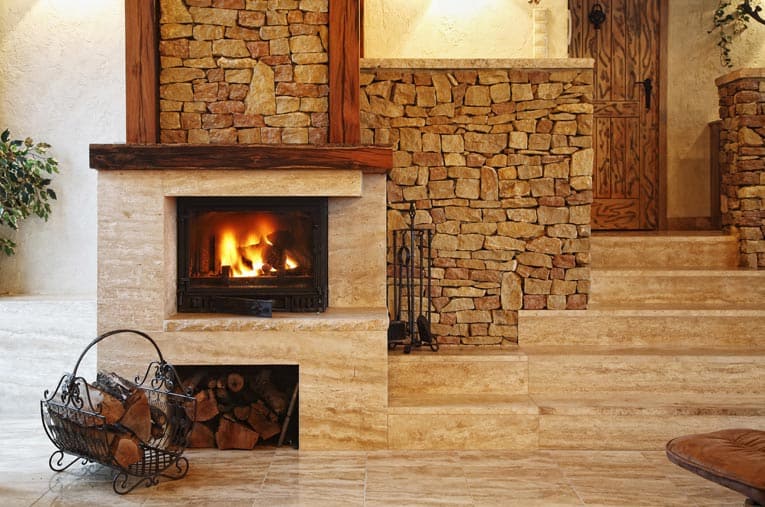
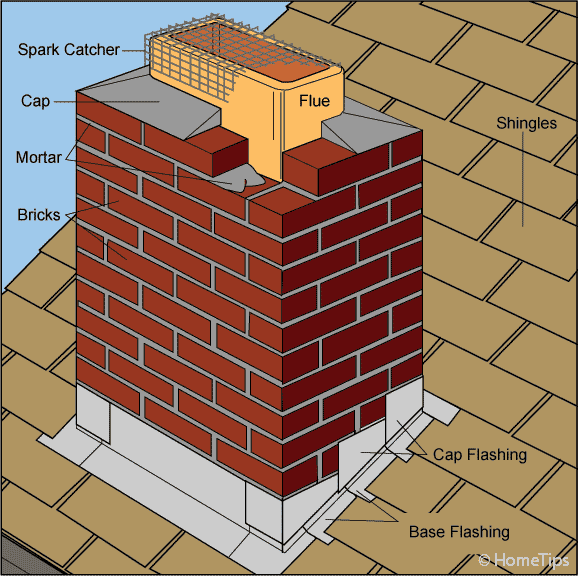
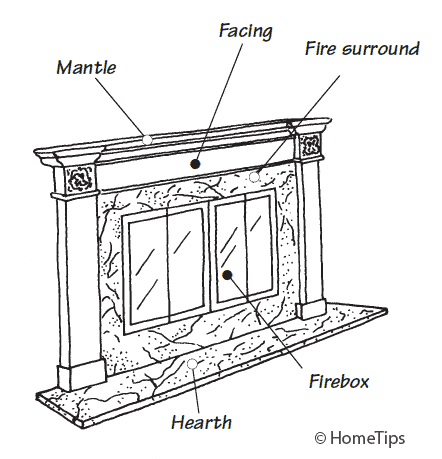
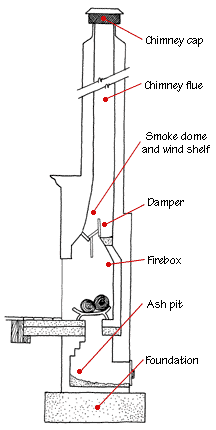
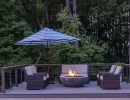
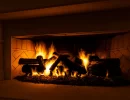
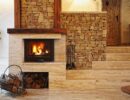

 Don Vandervort writes or edits every article at HomeTips. Don has:
Don Vandervort writes or edits every article at HomeTips. Don has:
